SAP fast factsStarting price: $6.30 per user per month. Key features:
|
SAP is one of the leading names in the enterprise resource planning market, but it also makes payroll and HR software in addition to its many other business tools. In this review, we’ll explore the SAP SuccessFactors HXM (Human Experience Management) Suite to help you figure out if SAP is the right choice for your business needs. We’ll also investigate SAP’s management features, weigh its pros and cons and offer some SAP alternatives.
Jump to:
- SAP’s pricing
- SAP’s key features
- SAP pros
- SAP cons
- If SAP isn’t ideal for you, check out these alternatives
- Review methodology
SAP’s pricing
SAP’s website states that pricing for the core SAP SuccessFactors Employee Central package starts at $6.30 per user per month, but it doesn’t disclose pricing information beyond that.
Prospective customers must contact the SAP sales team to get a quote for the specific feature set they need. You should also know that SAP doesn’t offer a free trial, so you’ll have to make a decision based on the product demo alone.
SAP’s key features
Payroll
SAP’s payroll (Figure A) is designed to support in-house, outsourced and hybrid payroll models, which means it’s compatible with a variety of companies. SAP’s payroll is also available in more than 100 countries, making it a great choice for companies that are either already operating internationally or looking to expand globally. Labor laws and other localized requirements are automatically incorporated to ensure compliance, and alerts identify eros before payroll is run.
Figure A
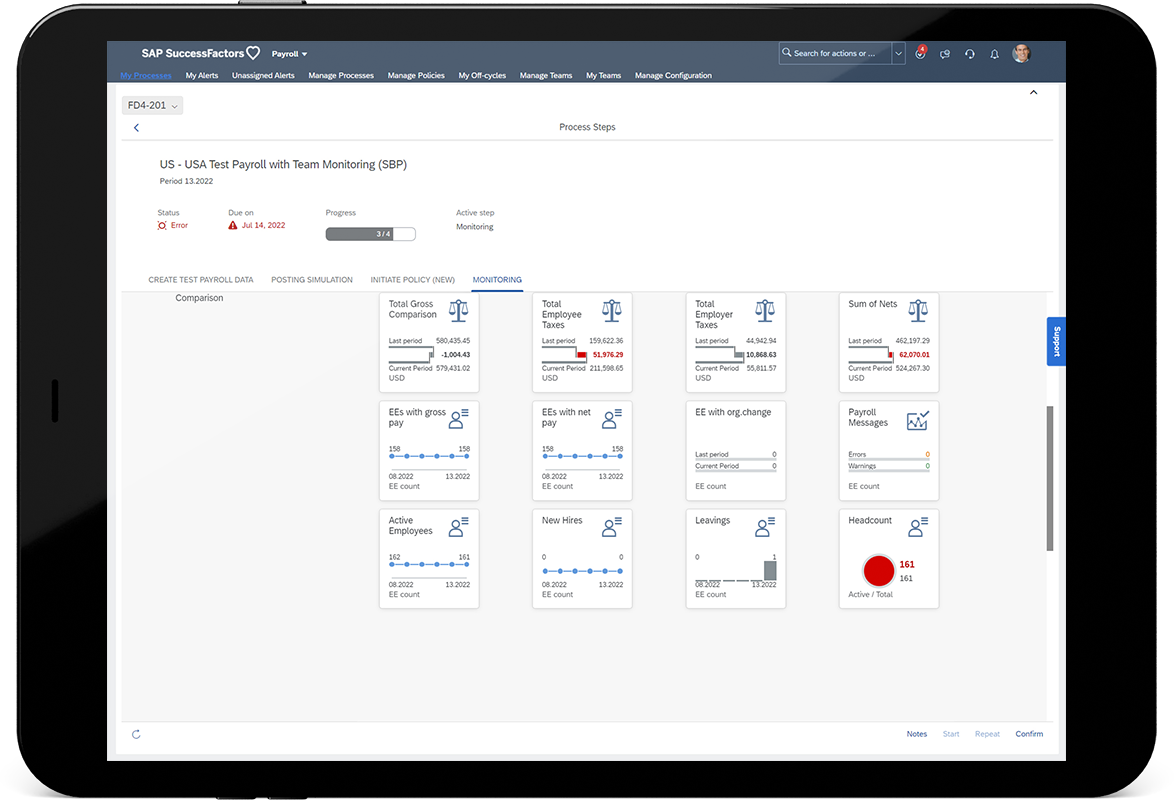
Time and attendance
SAP offers workforce management tools for time tracking, attendance and scheduling (Figure B). Use the tool to predict labor required and generate optimized schedules for the entire organization. SAP is compatible with multiple time clock options — including web, mobile and external clocks — to make punching in and out simple. The data automatically flows over to the payroll system through one unified interface.
Figure B
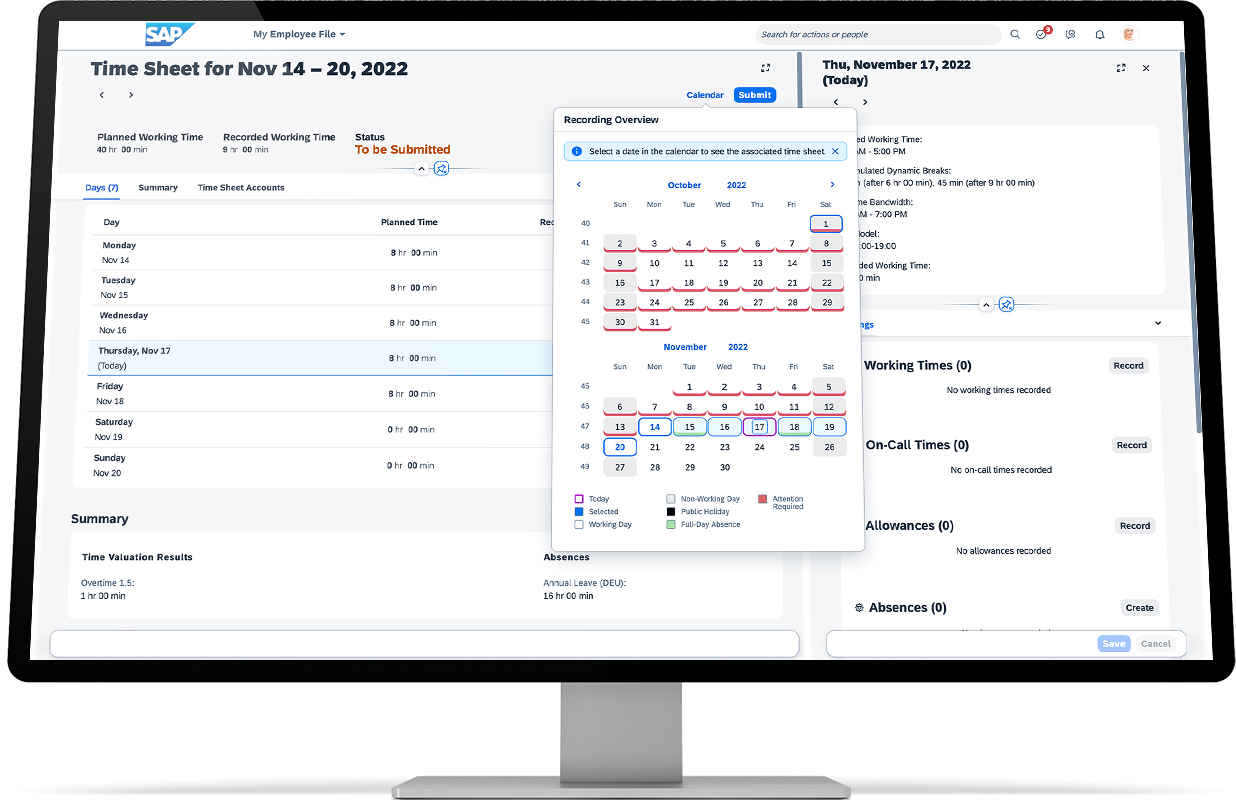
Recruiting and onboarding
SAP SuccessFactors Recruiting harnesses the power of cloud technology for high volume recruiting. SAP’s applicant tracking system (ATS) helps your recruiters post jobs, attract applicants, schedule interviews and score candidates.
The Opportunity Marketplace serves as an internal job board to notify employees of openings and help them get promoted internally (Figure C). Once a candidate has accepted an offer, SAP’s digital onboarding tools speed up the process, reduce paperwork and make it easy to obtain digital signatures.
Figure C

Talent management
SAP’s performance and goal management modules help managers and employees work together to set and track objectives and key results (Figure D). Compensation management tools help supervisors make evidence-based decisions about employee pay and establish reward and recognition programs. The succession planning tools help your employees expand their skills and help managers place the right workers in the right roles.
Figure D
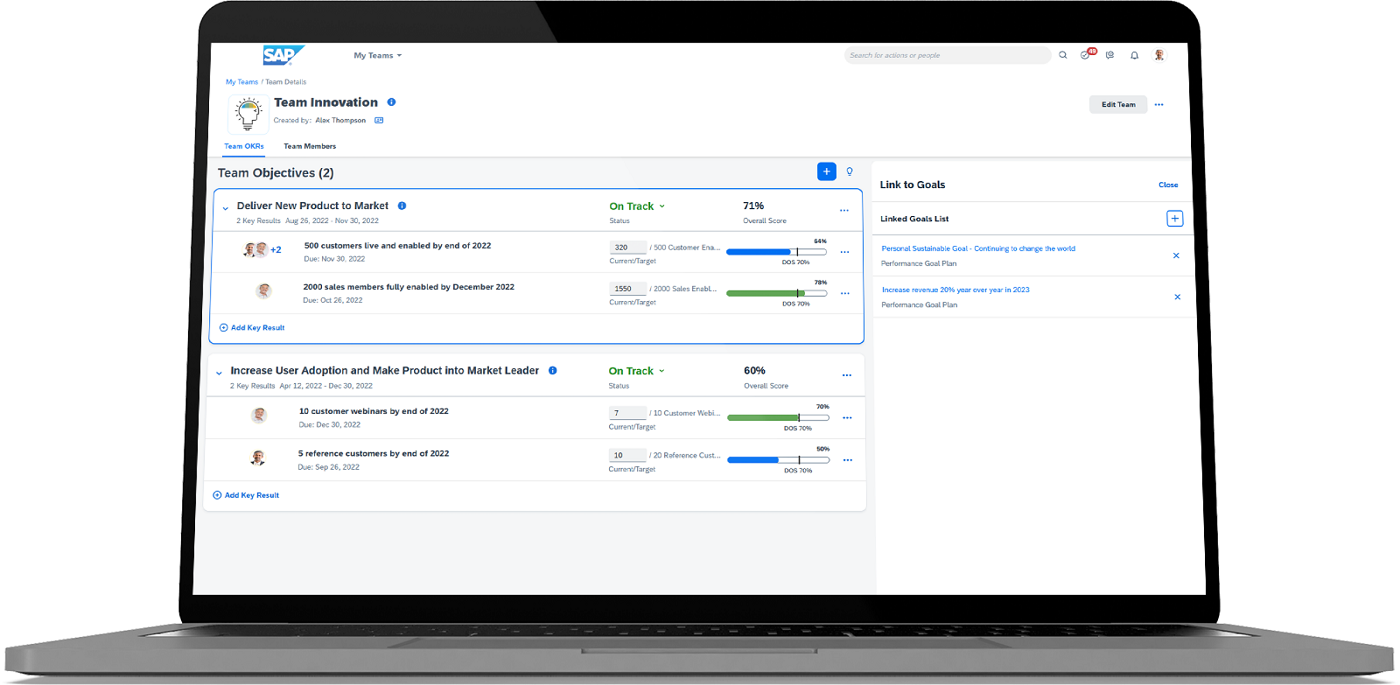
Employee experience
SAP provides several different tools to support a better employee experience through the SAP Employee Engagement bundle by Qualtrics (Figure E). Using these tools, managers can gather employee feedback, increase motivation and engagement, see how changes impact KPIs, improve the employee digital experience and manage the entire employee lifestyle.
Figure E
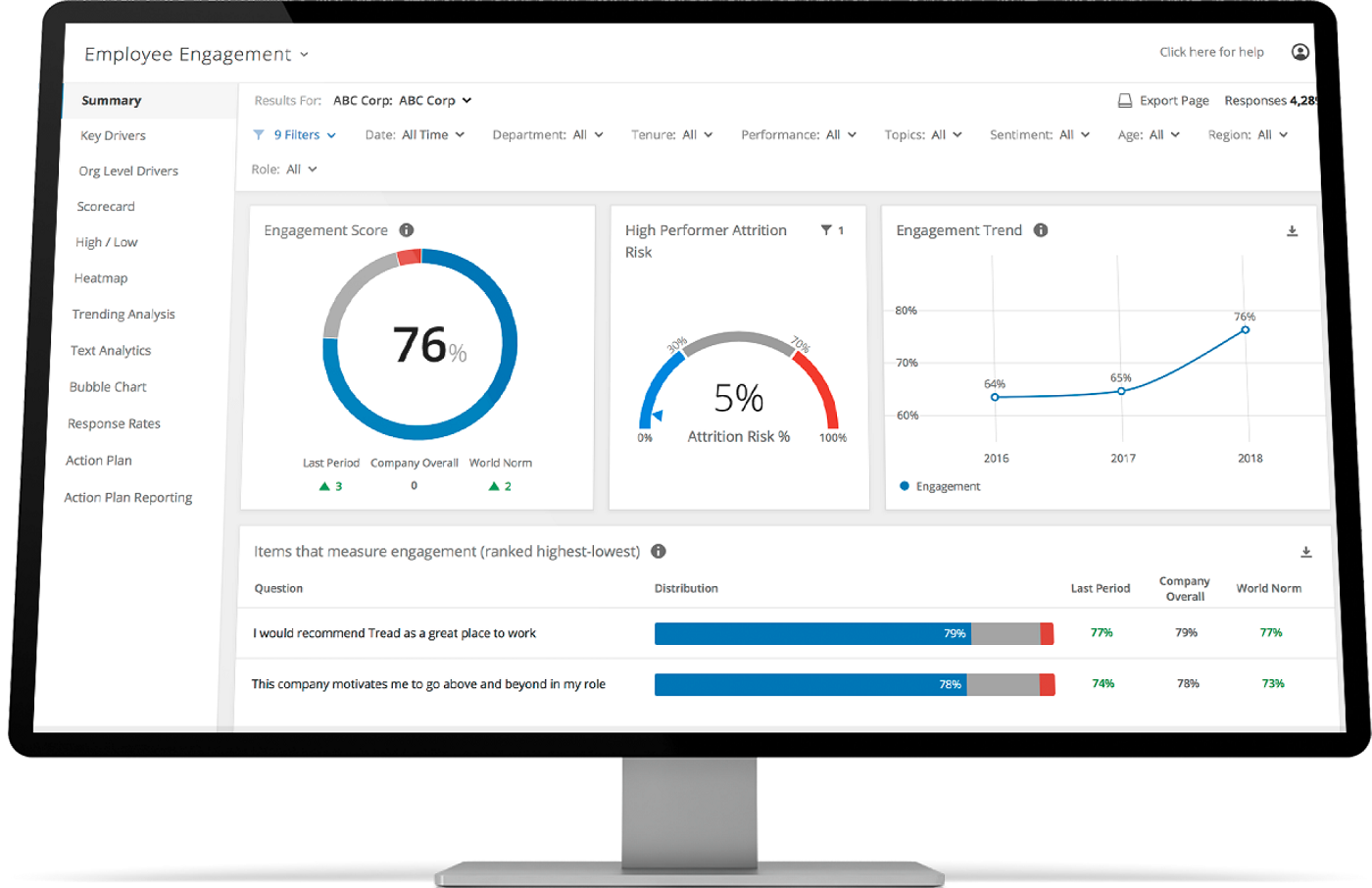
Learning management
SAP SuccessFactors Learning (Figure F) helps organizations achieve compliance and train their labor force. The platform allows clients to design personalized learning experiences for their entire organization and extended business network. Learners get insights into their goals, surveys, completions and other activities to help them stay motivated and on track.
Figure F
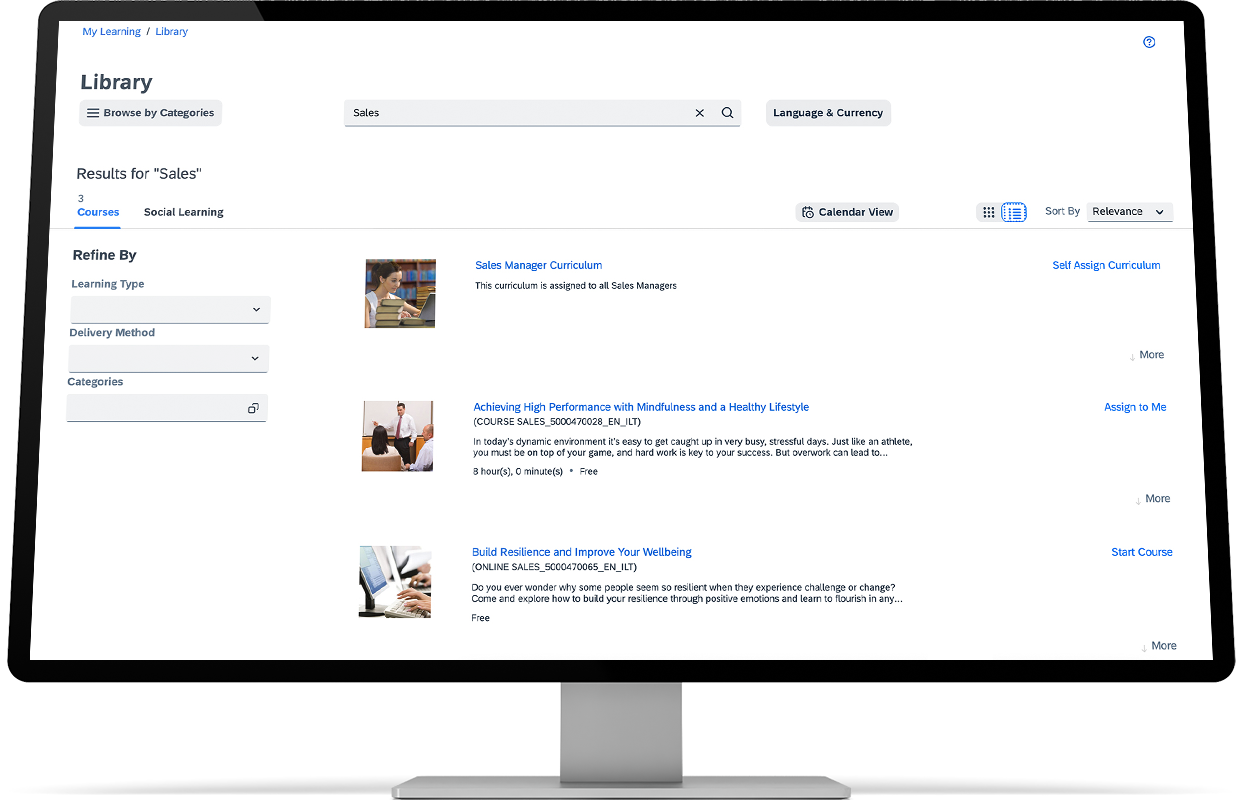
People analytics
SAP’s HR Analytics and Workforce Planning software encompasses more than 2,000 predefined metrics (Figure G). Track variables across your company to identify workforce trends and see how business changes are affecting the organization in real time. You can also connect HR data with financial or other third-party data to gain a more complete picture of the company. Machine learning augmentation proactively identifies insights to ensure that users don’t miss critical trends.
Figure G
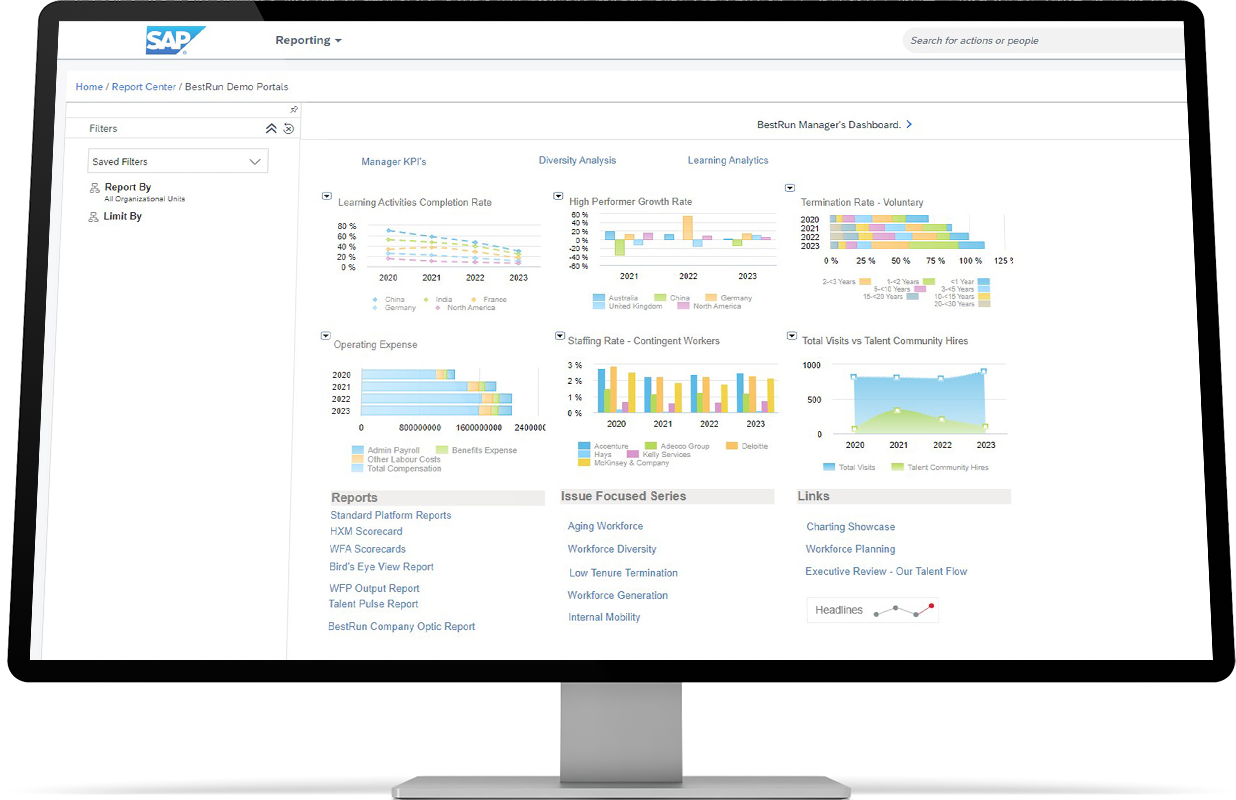
Document management
SAP’s document management capabilities are powered by OpenText technology (Figure H). With this solution, you can create, manage and store documents in the cloud to create a comprehensive digital employee record. Create your own templates to improve consistency and use conditional text formatting to generate dynamic documents. Set automation dates for document retention and deletion to keep everything up to date, and use role-based permissions to manage access control
Figure H
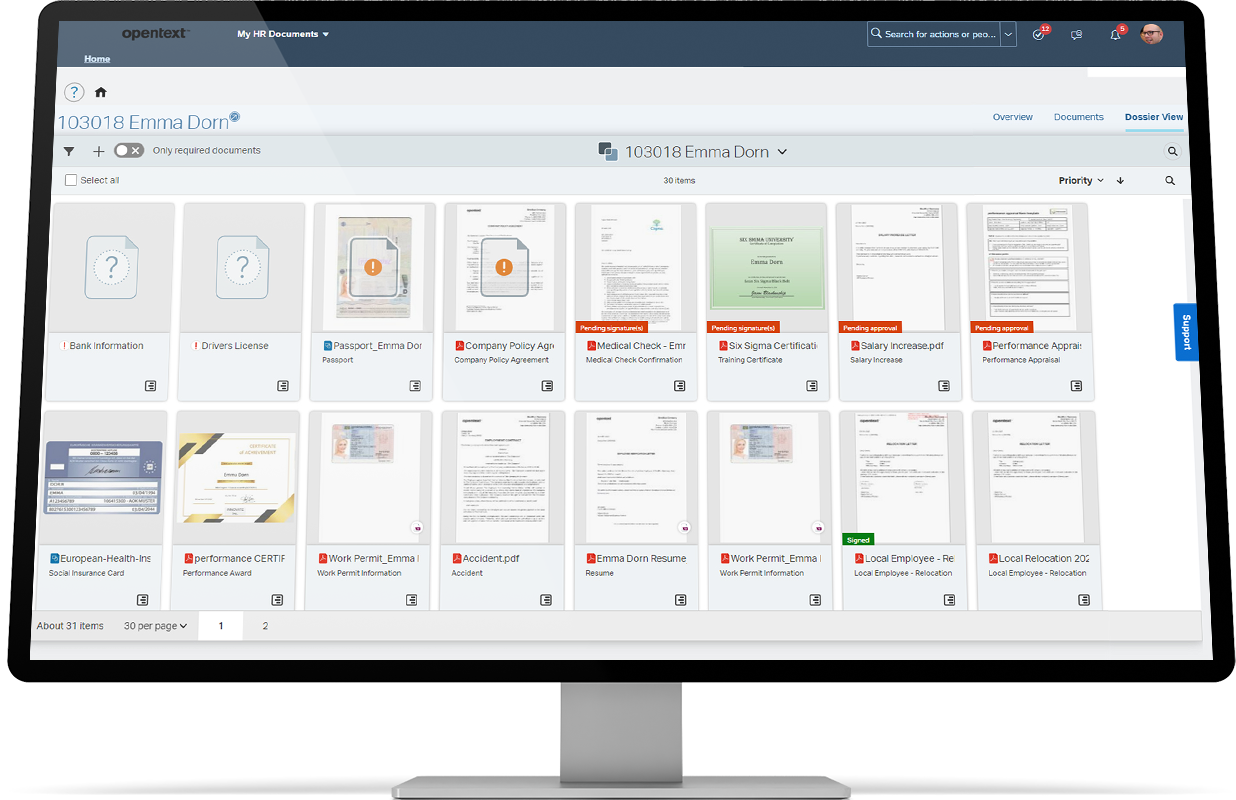
SAP pros
- Comprehensive HR and payroll features.
- Great performance management module.
- Learning management system available.
- Advanced reporting and analytics.
- Solid payroll system.
- Designed with enterprises in mind.
SAP cons
- Pricing isn’t transparent and no free trial available.
- User interface could be updated.
- Data loading and refreshing can lag.
- May be too complex for midsize businesses.
- Workflow configuration can be improved.
- Integration with third-party systems can be difficult.
If SAP isn’t ideal for you, check out these alternatives
While SAP has many advantages to offer, it doesn’t meet every company’s HCM requirements. Here are three other alternatives to consider if you aren’t sold on the SAP SuccessFactors HXM Suite.
| Starting price | Global payroll | Talent management | Analytics and reporting | Learning management | ||
|---|---|---|---|---|---|---|
| SAP | $6.30/user/mo. | 100+ countries | Yes | Yes | Yes | Try SAP |
| Sage | Contact sales for quote | 100+ countries | Yes | Yes | No | Try Sage |
| Workday | Contact sales for quote | 4 countries | Yes | Yes | Yes | Try Workday |
| Oracle | Contact sales for quote | 13 countries | Yes | Yes | Yes | Try Oracle |
Sage
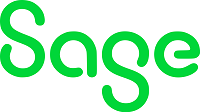
Sage offers payroll and HR solutions for many different sized companies, from small businesses to large enterprises. It offers many similar features to SAP, with some differences. For instance, Sage’s payroll platform is powered through a partnership with ADP, one of the most popular global payroll providers. It also doesn’t offer a learning management system, which SAP does. However, Sage provides a well-designed and intuitive interface that many will find easier to navigate.
Check out our Sage vs. SAP comparison for more information.
Workday

Workday’s global payroll platform is limited to the U.S., U.K., France and Canada, so it’s not the best choice for international businesses compared to SAP. However, it does offer excellent analytics and reporting capabilities as well as flexible feature sets that work for both medium and large size businesses. It also offers specialized support for a variety of industries including education, finance, healthcare, manufacturing and more.
Check out our SAP vs. Workday comparison for more information.
Oracle

Oracle is a close competitor to SAP and one of the other leading names in the ERP space. Oracle caters especially to large enterprises with thousands of employees, and its Cloud HCM software is a good choice for businesses already using other parts of the Oracle software stack. However, its interface can appear outdated compared to alternatives and the layout can be difficult to navigate, so it’s not the most user-friendly choice.
Check out our SAP vs. Oracle comparison for more information.
Review methodology
To review SAP, we consulted user reviews, product documentation and demo video. We considered factors such as pricing, integrations, user interface design and customer support. We also considered features such as payroll, time and attendance, recruiting, onboarding, talent management, employee experience, learning management, people analytics and document management.

